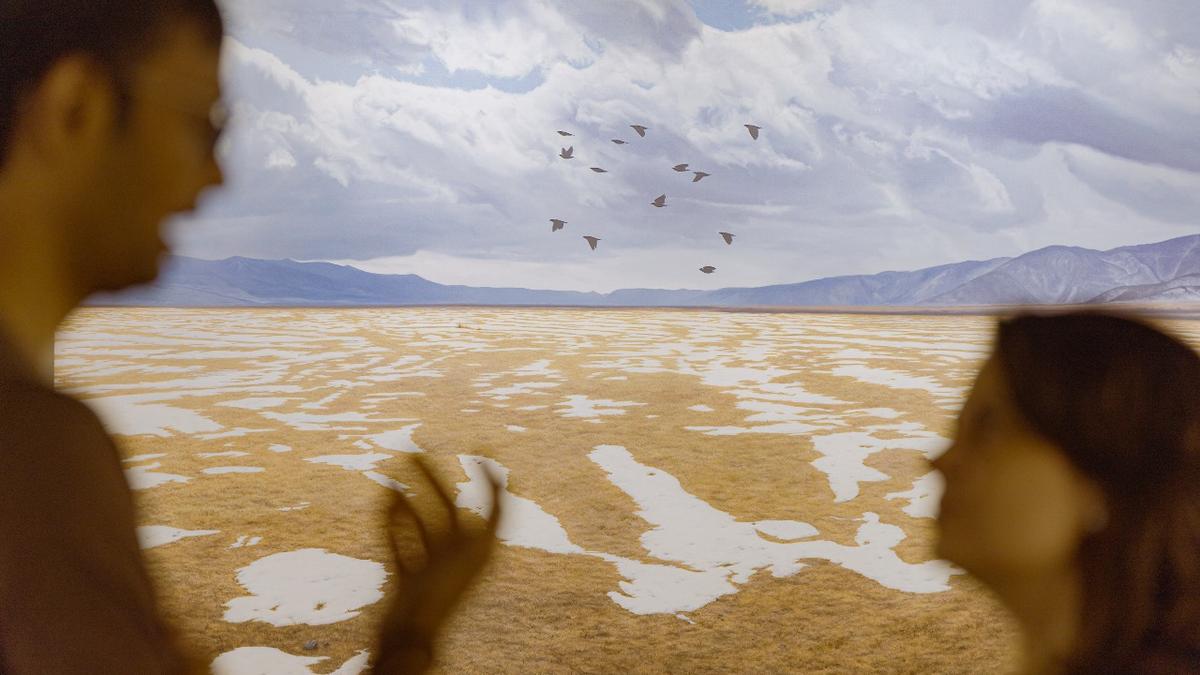
Indian contemporary art on show at Lalit Kala Akademi in Chennai
The Hindu
From bright expressionism to figurative sculptures, diverse work of five Indian contemporary artists populate Lalit Kala Akademi
Artist Basist Kumar’s photorealist canvases are one for the books. At Lalit Kala Akademi today, his body of work speaks a decipherable language — whether it be in large swathes of familiar landscapes, in soothing blues and brown, or figurative forms whose depth lie in their detail. His skill defies the limits of photography, opening up a surreal quality that reflects off his human figures. He is one of the five promising young Indian artists, each with a diverse contemporary idiom, whose works are currently on display at Lalit Kala Akademi.
Brought to Chennai by Ashvita’s and Delhi-based gallery Nature Morte, this show titled Manifestoes in the Air, presents a slice of what contemporary Indian art means in today’s context, showing starkly varied work by Benitha Perciyal, Nidhi Agarwal, Parul Gupta, Neeraj Patel and Basist Kumar.
American artist Peter Nagy of Nature Morte, explains, “We have done solo shows with all these artists in Delhi. The theme is five individual artists who have their own individual voices they are pursuing. It’s not a thematic show.” Nature Morte as a gallery looks at artists who make a commitment, artists who are sure of what they want to do. “They have to make a commitment to the medium that they are going to specialise in, and a type of imagery which then overlaps with content and that’s what each of these artists are doing,” he says.
Benitha’s approach to sculpture is entrenched in faith. Her work, which has travelled to biennales and art fairs across the country, deliberates on transcendence — her use of perishable and organic mediums are testament to this. The collection showcases bits and pieces from her body of work spanning 10 years, some of which have been part of the Kochi-Muziris Biennale and the India Art Fair in Delhi. One such work is the reclining Christ with no arms — “When I went for the first biennale, at one of the venues, I found a Christ exactly like this, with broken arms. So I created the figure using materials that will perish and break away by itself. I kind of became a tool for the medium to do whatever it needed to,” explains Benitha. Her popular carved book series, Xenophora, is also on display. The project which started almost a decade ago, is still in the works. She says, “A library is still in the making.”
If Basist can be called a photorealist, then Nidhi Agarwal is a straight-out expressionist, says Peter. Her vibrant, abstract tapestry of found fabrics and bright colors leaves no room for deliberation. They demand multiple repeated looks. Her canvases scream chaos with aggressive brushstrokes trying and sometimes even failing to create charged figures. “There’s a consistency in the way she paints, and handles the fabric,” adds Peter.
Parul Gupta on the other hand, is completely committed to the minimal, yet precise line drawings that appear in charged motion. Each of her canvases have a vibratory quality that is arresting — they appear like subtle smudges; they seem as though they are on their way to disappearance, making the work distinctive and striking.
“Neeraj’s abstract work is more informed by digital media, and computer languages making it completely different from what others are doing,” adds Peter. His canvases point out the errors in the system and visually resemble coding. His series, Industrial Landscapes, are inspired by his investigations into the ruined and repurposed architecture around Baroda.
